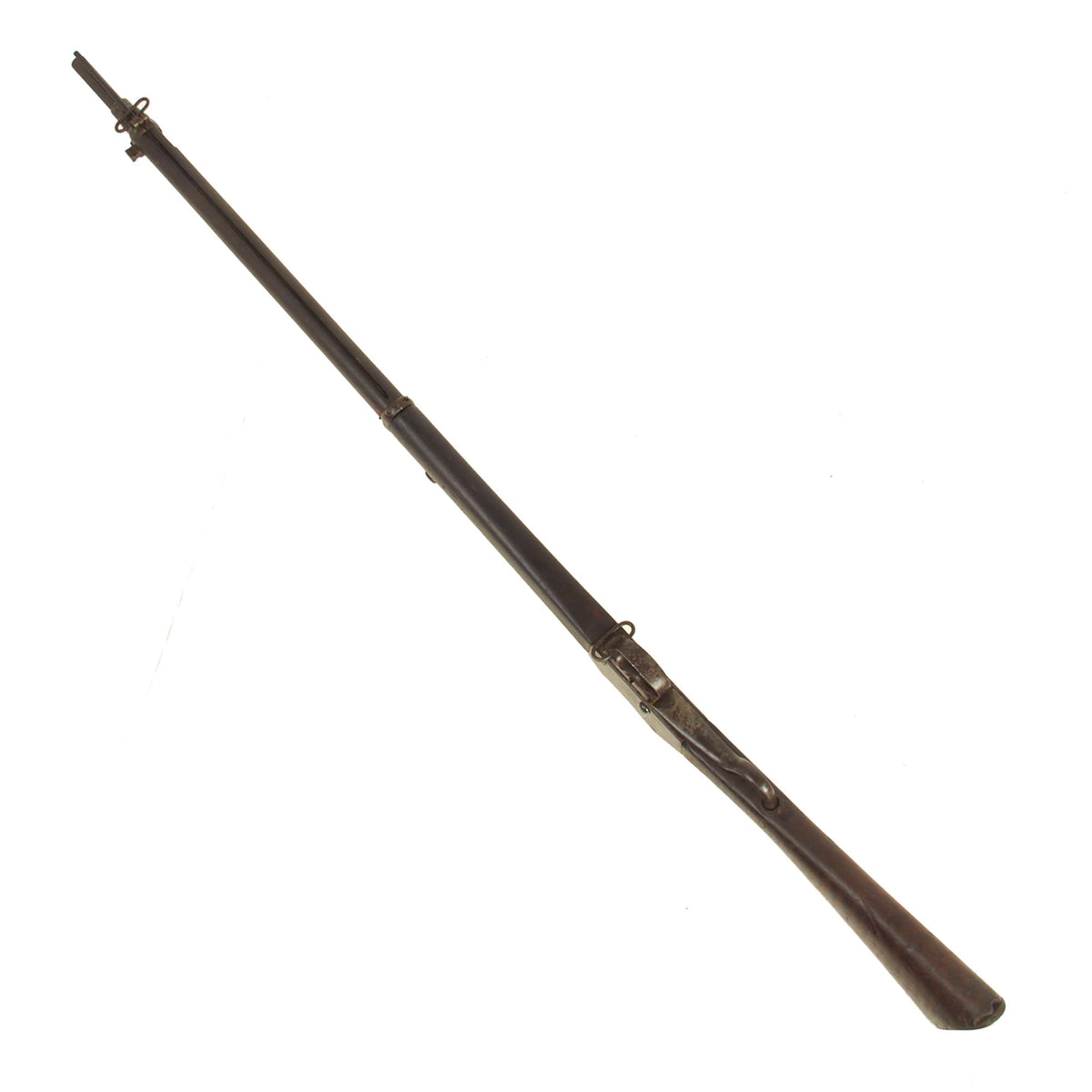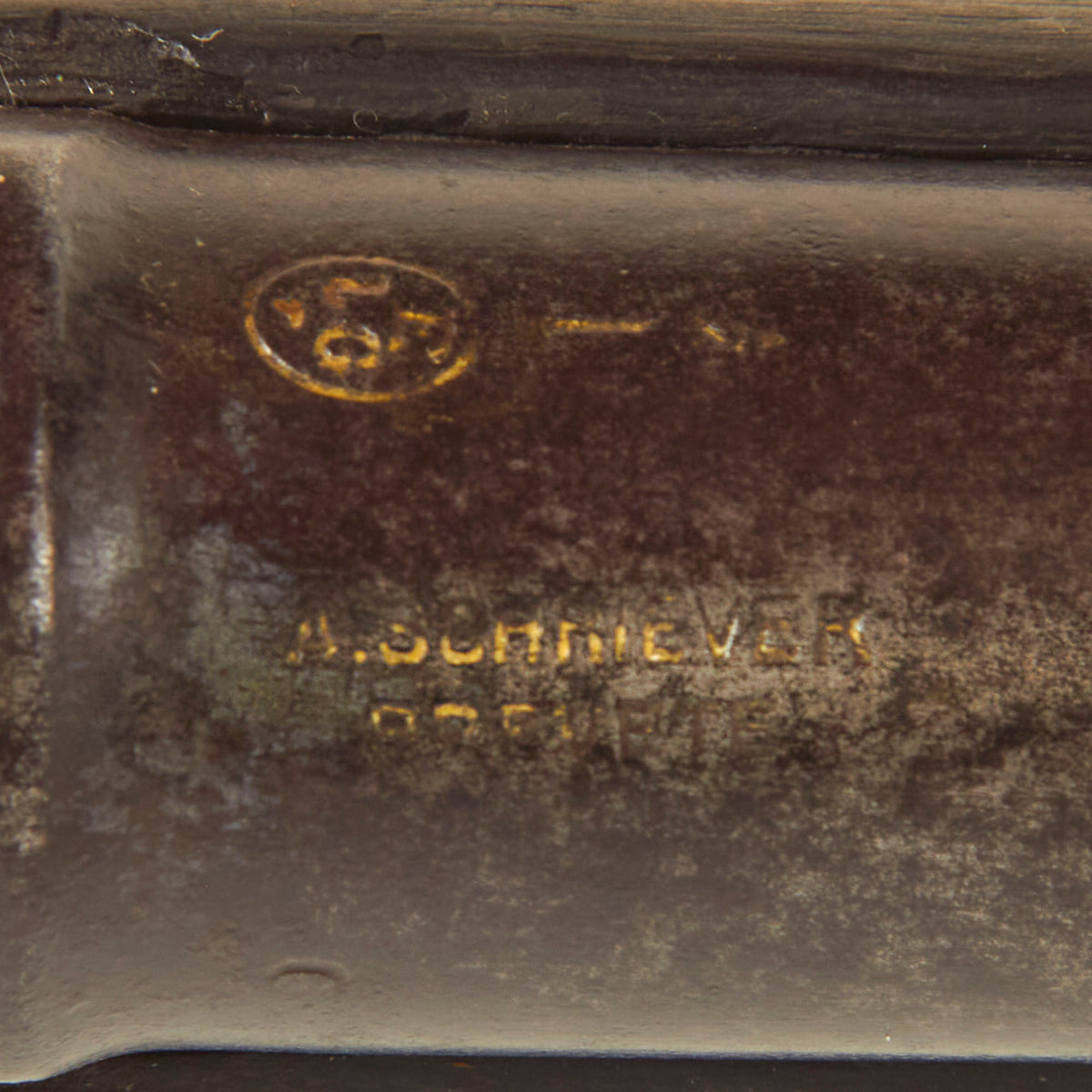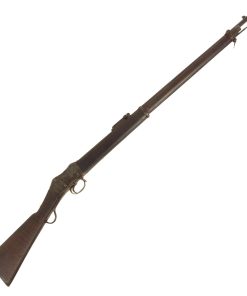Original Austrian 1883 Boer Peabody-Martini Rifle by ŒWG Steyr Converted to .303 By A. Schriever in Belgium – Serial H2588 Original Items
$ 995,00 $ 248,75
Original Item: Only One Available. The Martini-Henry falling block system was arguably one of the most popular designs of the late 19th Century, being the primary weapon of the British Military for almost 20 years. Refit and surplus British rifles continued to serve for decades after the introduction of the Lee-Metford in 1888. However, the British were not the only country to use the system, and the design was adopted by many other countries. They were also made commercially in England, Germany, Belgium, and elsewhere.
One prominent company that became engaged in Military and Commercial production was the famous Austrian arms company, Österreichische Waffenfabriksgesellschaft, (ŒWG, Austrian Arms-Manufacturing Company). Also commonly referred to as Steyr Werke, they were located in Steyr, just outside Vienna, and at the time was the home of the entire Austrian arms production. Romania had seen the Turkish M1874 Peabody-Martini Rifle produced by Providence Tool Co. in the United States, and decided to order these from& ŒWG Steyr, chambered in 11.43×59mmR Romanian, a necked down cartridge somewhat like the ones used by the British and Turkish Martini-Henry Rifles. From the exterior, the British, Turkish, and Romanian Martini-Henry rifles look for the most part identical, except for small details like the sight and markings.
Our example has the large OE WG monogram on the left side of the receiver, with STEYR * 1883 in the center. The right side of the receiver is just marked with serial number H2588 next to a “Crossed P” proof that we do not recognize. However, there are NO Romanian markings on this rifle, which would normally be on the right side of the receiver.
This is a commercial version of the M1879 Romanian Peabody-Martini, usually called the “1883 Boer Steyr Peabody Martini Henry Rifle.” In 1883 following the First Boer War, the the Transvaal / South African Republic required additional arms for defense and the possibility of the British deciding to reclaim the territory. Already familiar with the British Martini-Henry, they went to Steyr, who supplied them with the commercial version of the Romanian rifles in 1883.
After use in South Africa, it looks like this rifle continued in service, and like many Martini action rifles was converted to take .303 British. We do not know if this was done in South Africa or elsewhere, but the barrel and conversion parts were definitely done using Belgian parts. The .303 Barrel is marked on top of the breech with:
A. SCHRIEVER
BREVETÉ
This indicates it was a “Patented” design by Schriever. Next to this is the the “Perron” Tower of Liège proof over the standard E / L G / * in an oval, also for Liège, Belgium.
After the conversion, the rifle looks to have seen long service, and the exterior metalwork shows a well aged and peppery patina overall. The woodwork is relatively dark in color, showing dents and scratches from long service, though the butt stock does have some great “tiger flame” figuring in it. The action cycles correctly, though we have not tested it with any type of dummy cartridges. The bore still shows clear rifling, but also wear and some oxidation, particularly near the muzzle, where there is a lot of wear.
A very interesting example of a rare rifle, ready to research and display!
Specifications-
Years of Manufacture: 1883 – converted later to .303
Caliber: .303 British
Cartridge Type: Centerfire Cartridge
Barrel Length: 33 1/4 Inches
Overall Length: 49 3/4 Inches
Action type: Lever Action Falling Block
Feed System: Single Shot
Fast Shipping with Professional Packaging
Thanks to our longstanding association with UPS FedEx DHL, and other major international carriers, we are able to provide a range of shipping options. Our warehouse staff is expertly trained and will wrap your products according to our exact and precise specifications. Prior to shipping, your goods will be thoroughly examined and securely secured. We ship to thousands clients each day across multiple countries. This shows how we're dedicated to be the largest retailer on the internet. Warehouses and distribution centres can be located throughout Europe as well as the USA.
Note: Orders with more than one item will be assigned a processing date depending on the item.
Before shipping before shipping, we'll conduct a thorough inspection of the items you have ordered. Today, the majority of orders will be delivered within 48 hours. The delivery time will be between 3-7 days.
Returns
The stock is dynamic and we cannot completely manage it because multiple stakeholders are involved, including our factory and warehouse. So the actual stock may alter at any time. It's possible that you may not receive your order once the order has been made.
Our policy is valid for a period of 30 days. If you don't receive the product within 30 days, we are not able to issue a refund or an exchange.
You can only return an item if it is unused and in the same state as the day you received it. You must have the item in its original packaging.
Related products
Uncategorized
Uncategorized
Uncategorized
Uncategorized
Uncategorized
Uncategorized
Uncategorized
Uncategorized
Uncategorized
Band of Brothers ORIGINAL GERMAN WWII Le. F.H. 18 10.5cm ARTILLERY PIECE Original Items
Uncategorized
Uncategorized
Uncategorized
Uncategorized
Angolan Rebel 1970s era 60mm Inert Display Mortar from Angolan Civil War Original Items
Uncategorized
Uncategorized
Uncategorized
Armoured Fighting Vehicles of the World: AFVs of World War One (Hardcover Book) New Made Items
Uncategorized
Uncategorized












































































